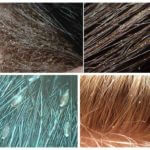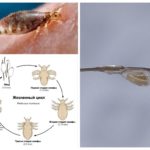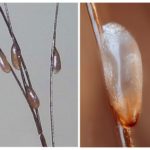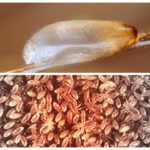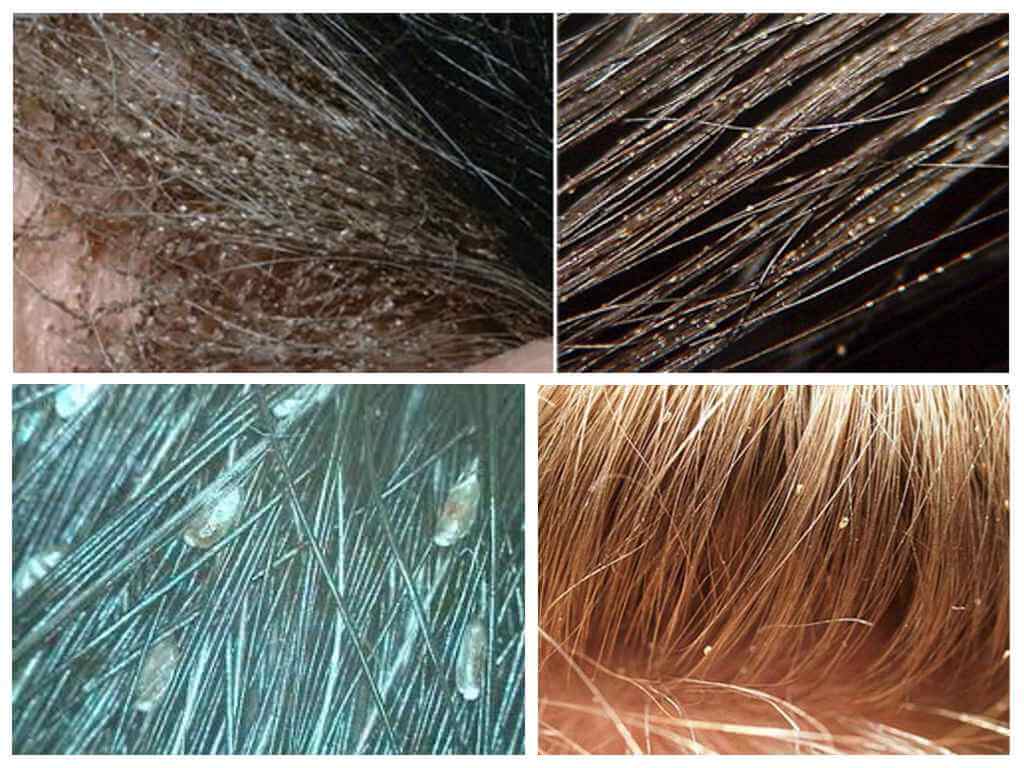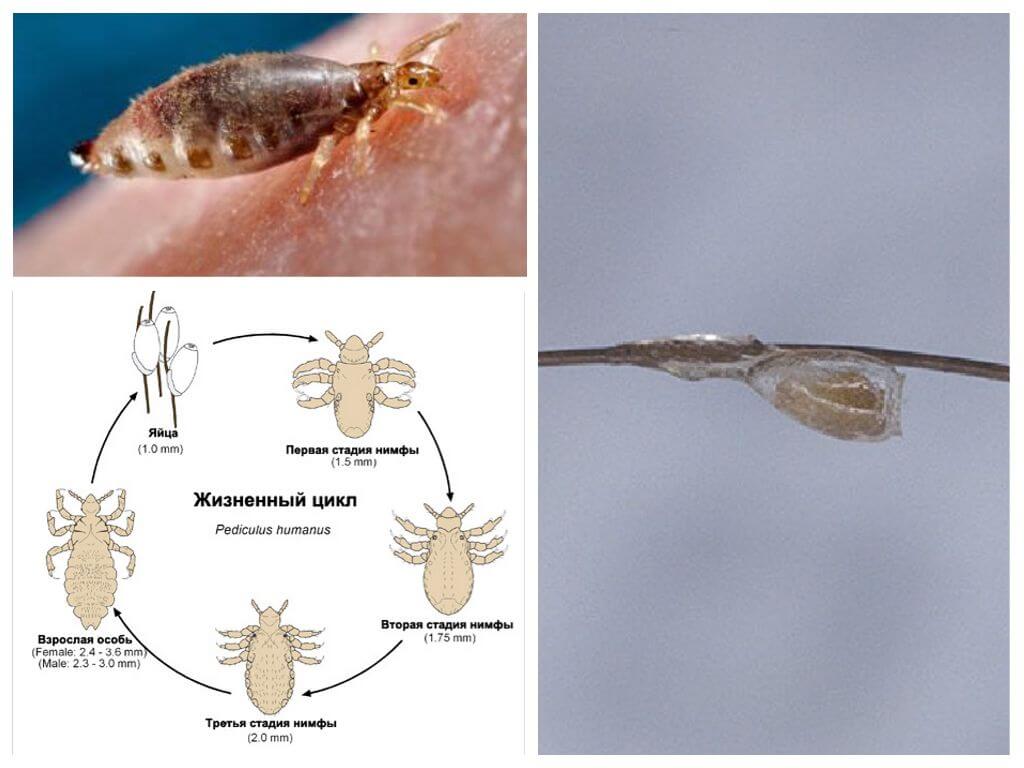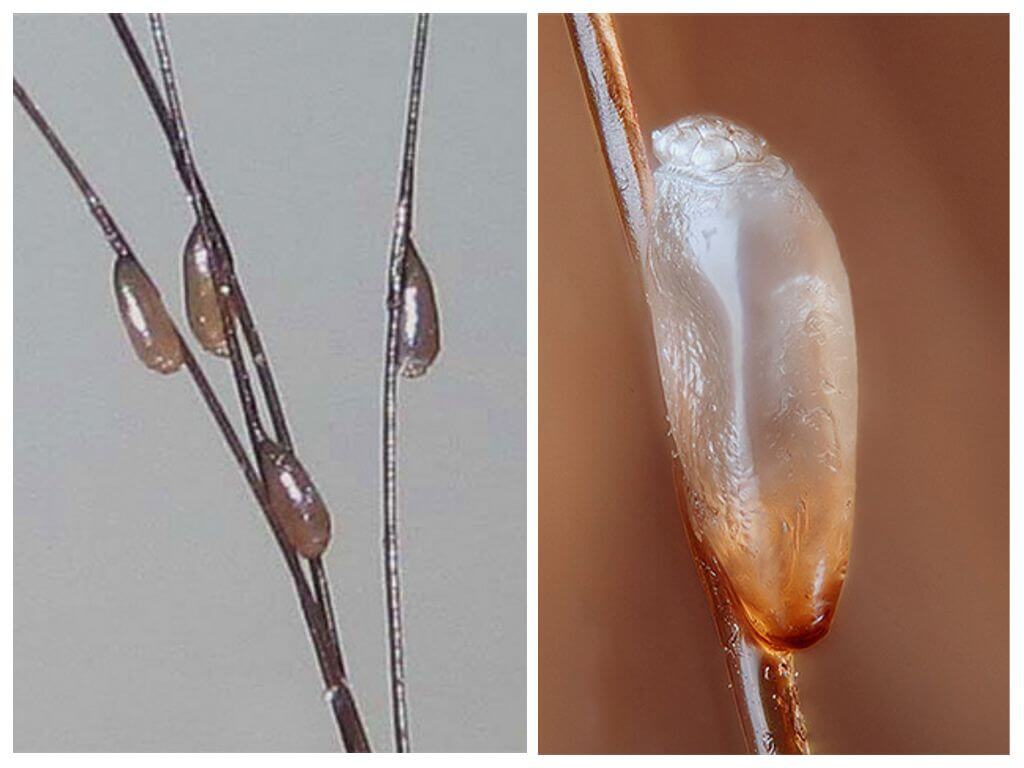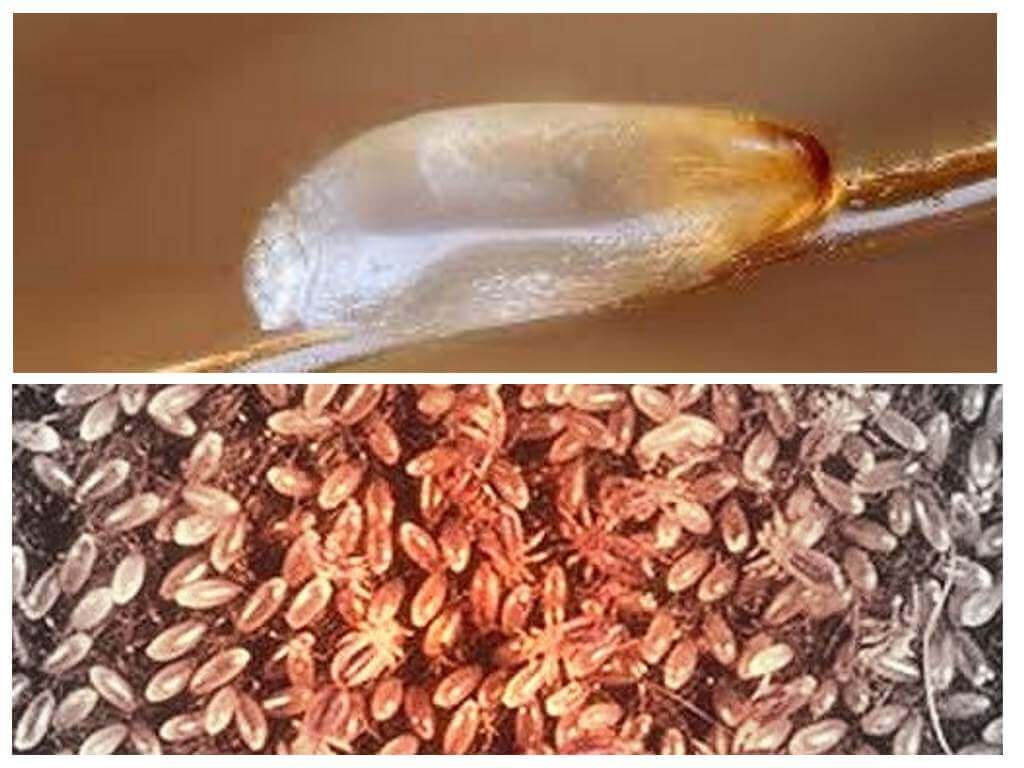Incubation period of lice and nits in humans
- Types of lice
- Lice in hair
- Lice and nits
- Nits
- Nits
Lice and their guides - an unpleasant phenomenon, but quite common. An insect is a small wingless ectoparasite having three pairs of tenacious legs. With them it is securely attached to the human hair, on which it places its eggs - nits. They are easy to see with a close examination of the head. The time interval during which the development of eggs and the emergence of adults occurs is called the incubation period for lice and nits in humans.
Ectoparasites feed on blood, piercing the skin of their victim. They are carriers of dangerous infectious diseases, including typhus. The phenomenon associated with the appearance of pests on hairy areas of the body is called pediculosis and requires urgent treatment.
Ways of infection and signs of lice
There are several types of lice:
By themselves, they can not appear, since the parasites have no wings. Therefore, the only method of infection is contact. Pediculosis can be infected in various situations, the most common are such cases:
- a trip in crowded city transport;
- visiting public places: swimming pool, sauna, hairdresser, gym and other organizations;
- in kindergarten, the schoola hospital or hotel;
- direct contact with a person infected with lice or household items.
These factors indicate that poor sanitation is not always the cause of infection with lice and nits. Insects prefer to settle on healthy clean hair.
The incubation period for pediculosis is not a pronounced course of the disease without typical symptoms. It largely depends on the degree of infection and ranges from 6 to 12 days. If the number of lice is small and the sensitivity of the skin is weak, the patient may not feel discomfort for a long time. However, the initial imperceptible infection is dangerous because lice have fast breeding, incessantly laying nits.
To the main headache symptoms include such phenomena:
- intense, debilitating itching of the scalp;
- small spots of a grayish-bluish color on the skin;
- multiple scratching, contributing to the development of acute dermatitis;
- the appearance of inflammatory papules in bite areas;
- the presence of nits in the hair.
When running forms of the disease in humans, signs of anemia can be fixed, hair becomes untidy stuck together with a specific putrid odor. How lice and nits look in hairshows a photo.
Important!
During one meal, the parasite absorbs up to 5 mg of blood, injecting saliva into the wound with a special enzyme that prevents its clotting,with a minor infection at first lice bites go unnoticed.
Parents often ask the question - where do lice from children come from. The answer is quite simple - kids often exchange clothes or hats, use other people's hairbrushes, as well as other personal items. Children are almost always in contact with a large number of people in kindergarten, school, summer recreation camps or just in the yard. In order to avoid the spread of parasites, it is necessary to inspect the baby’s head as often as possible, and when identifying the first signs of lice and nits, a comprehensive pediculosis treatment all family members.
The life cycle of parasites
Lice live without a person not for long, as they cannot exist without food, which is necessary for them for normal vital activity and active reproduction. The more favorable the microclimate, the shorter the incubation period for nits and lice. Therefore, it is very important to notice pediculosis at the initial stage, especially if there is a risk of infection. Contrary to the opinion that lice only appear in homeless and untidy people, pediculosis is detected in absolutely prosperous citizens.Parasites prefer clean heads, because dirty hair has a greasy layer that don't like lice.
A louse does not live long - just over 30 days. In the scientific literature there is no definitive answer to the question of how many nits lush per day. Their number is directly proportional to the nature of the external conditions and the type of parasite. The head louse produces from 3 to 4 eggs daily, the dress parasite from 6 to 14, and the female pubic pest is able to lay about 50 eggs in its lifetime.
Based on this information, it is estimated that, on average, one female can, over the entire period of her life, be set aside up to 140 nits. There is more than one parasite on the human head, so it is easy to guess how many insects can mature in a short period of time. That is why the advanced stage of pediculosis requires a rather lengthy and painstaking process. removing lice from a child or an adult.
Important!
Regardless of the degree of infection, anyone with a diagnosis of lice is a potential carrier of lice.
The incubation period of an ectoparasite from an egg to a mature pest varies from 16 days to a month.At the rate of development and after how many days the lice hatch from nits, directly influenced by the temperature background of the environment. From the moment of birth to the end of the life cycle, the parasites go through 4 stages:
- nit (egg);
- larval stage;
- first and second order nymph;
- adult insect.
Interesting!
For a lifetime, a louse sheds three times. This is because the chitinous shell does not increase with the body. It breaks and a new one forms in its place.
Head lice are insects with an incomplete cycle of transformation, as evidenced by their developmental stages. These periods last for a relatively short time and therefore the life expectancy of the insect is small, but the rate of reproduction is a record one. The periods that louse develops have different temporal boundaries. Generally, the life cycle of an ectoparasite is as follows:
- Nits are light yellow or white dots of a teardrop shape attached at the base of the hair. They have a very small size - approximately 1 mm in length, similar to dandruff, so it is important to be able to distinguish nits from seborrhea. The ripening of a live egg lasts from 5 to 8 days.Many are interested in the question of what feeds nits. Inside the opalescent sac is a special nutrient fluid, which is necessary for the full development of the larva. The optimal conditions for the minimum period of incubation nits, are normal humidity and external temperature within 31 ° C. At temperature indices above 40 ° C and less than 22 ° C, the formation of the larvae stops and it cannot hatch.
- Larvae can develop from one to 10 days. The duration of the period is regulated by the temperature background. Half an hour after the appearance, she begins to feed on the blood of her master.
- The nymph of the first age group is formed within 5 days.
- A nymph of the second order develops for 8 days and turns into an adult insect - imago.
Formed parasites acquire the ability to reproduce after the first bite at the end of the final molt. The process of mating occurs on the first or second day after the transformation of the nymph into an adult insect. The period of ripening nits to lice depends on the ambient temperature. Parasites hatch in a week at 25-26 ° C, and at 32-33 ° C, this interval is reduced to 5-6 days.
Pediculosis treatment
If you find the first signs of infection with dangerous parasites, you should immediately contact a dermatologist who will recommend effective remedies for lice and tell you how to properly treat an infected person. The development of lice is associated with the risk of dangerous infectious diseases. After the appearance of lice in people begins to peel off and dry up the scalp, lymph nodes inflamed. Persistent itching can contribute to damage to the skin of the head, as a result of which ulcers form, hair sticks together and begins to smell unpleasantly.
There are a large number of effective drugs that inhibit the activity of insects or contribute to their destruction. It should be noted that not all means can destroy nits. Therefore, to get rid of parasites, it is necessary to carry out processing several times, as well as carefully brush your head special frequent combwhich is attached to drugs or purchased separately.
Get rid of lice and nits possible at all stages of their development.It is necessary to start treatment in time with highly effective shampoo, sprays, ointments, lotions and other tools that are presented in a wide range in pharmacies. In addition may apply folk remedies for lice.


